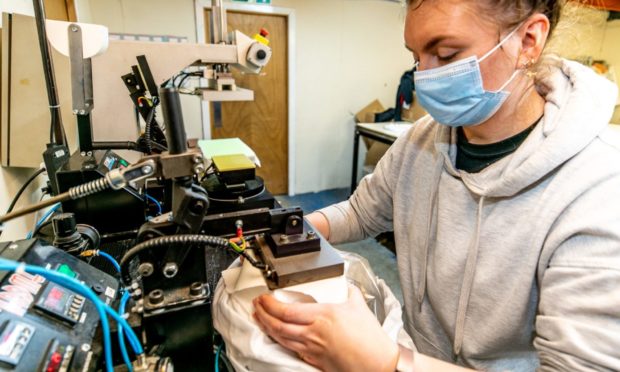The Scottish economy continued on its recovery path in April, according to the latest Royal Bank of Scotland PMI.
The index, which measures both manufacturing and service sector activity, found that April enjoyed the quickest rate of growth for eight months.
A rise in new work – the highest level three years – was a significant factor in the monthly data.
Client demand had improved “noticeably” amid loosened lockdown restrictions, said the panellists. This in turn built up capacity pressure, which caused backlogs of work to build up for the first time in over two and a half years.
First sign of jobs growth since start of the pandemic
In response, firms took on additional staff for the first time since January 2020, the bank said. The increase in workforce numbers during April marked the first round of job creation since before the Covid-19 pandemic. The rate of increase in employment was marginal overall, but slightly above the series long-run average.
However, the growth in jobs was a tale of two sectors. Most were concentrated in manufacturing which highlighted a “notable divergence” to the service sector, the report said. Employment continued to decrease amongst service businesses, although the rate of reduction slowed on the month.
…but growth still lags UK
Nonetheless, the rate of growth in Scotland lagged behind the UK average in April. Of the 12 monitored areas, only the North East of England saw a slower expansion of new business than Scotland.
Scottish companies remained optimistic with regards to output over the next year in April, with the Future Activity Index falling only slightly from March’s record high. Anecdotal evidence attributed confidence to improved sales, easing lockdown restrictions and hopes of strong growth alongside an economic recovery.
Signs inflation is on its way?
However, the promise of recovery also brings concern about rising inflation.
April data highlighted a further steep increase in cost burdens facing Scottish firms, the fastest since August 2018. Price hikes at suppliers, greater utility, wage and material costs, as well as Brexit, were the primary drivers of inflation, according to panellists.
At the sector level, both manufacturers and services firms saw a marked rise in costs, although the rate of inflation was noticeably quicker for the former.
Most of these costs were passed on to the customer, as charges levied by Scottish private sector firms rose further in April. Moreover, the latest rise in charges was the fastest since February 2011 and sharp.
As was the case for input prices, goods producers recorded a much steeper increase in charges than services firms.
Things are looking up
Goods producers recorded the strongest level of sentiment on record in April, although they were still less optimistic than services firms.
Malcolm Buchanan, Chair, Scotland Board, Royal Bank of Scotland, said:
“April data highlighted further gains for the Scottish private sector as it continues on its recovery path. Business activity rose for the second month in a row, with the latest upturn the strongest for eight months. Key to growth was a renewed rise in new work and one that was the strongest for nearly three years.
“Further positive news came from employment, with companies adding to staff numbers for the first time in over a year – a clear sign that firms are confident of a recovery. Indeed, the year-ahead outlook for activity remained historically elevated.
“Overall the data are very encouraging and suggest the private sector has turned a corner towards recovery. With lockdown measures set to ease further, we should see a sustained rebound in the months to come.”

